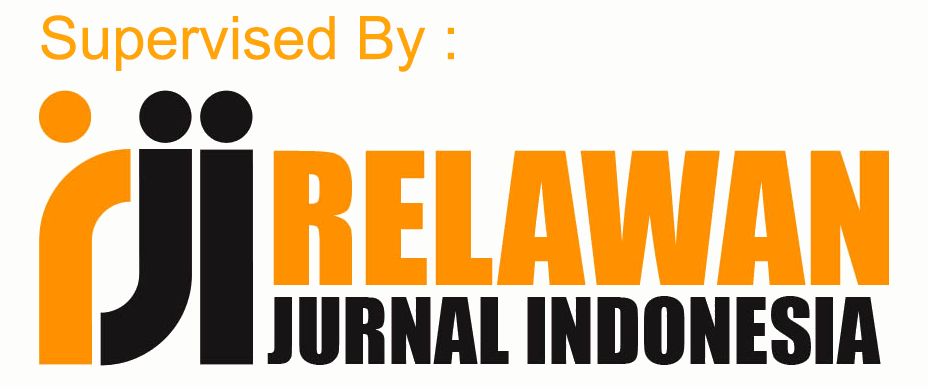EFEKTIVITAS KONSENTRASI PUPUK CAIR TNF DAN DOSIS LIMBAH BUNGA KENANGA TERHADAP PERTUMBUHAN DAN PRODUKSI TANAMAN JAGUNG MANIS (Zea Mays Saccharata Sturt) VARIETAS TALENTA
Abstract
The sweet corn plant is a commodity crop and belongs to the family of grasses, the genus Zea and the species of Zea Mays Saccharata. Fertilization of sweet corn serves to increase levels of sweetness, production and growth of sweet corn. One of the nutrients needed by plants is organic matter. The function of organic matter is to improve or increase soil fertility so that crop production is increased. One form of organic material used in this study is compost made from the remnants of essential oil refining waste or called cananga flower waste. This study aims to determine the interaction between the concentration of liquid fertilizer TNF (Trace Nutrient Fertilizer) and cananga flower doses on the growth and production of sweet corn (Zea Mays Saccharata Sturt) Talenta varieties. The experiment used a 2 factor randomized block design with 9 levels of treatment and 3 replications. The composition of the treatment is P1 (TNF liquid fertilizer 5 ml / l), P2 (TNF liquid fertilizer 10 ml / l), P3 (TNF liquid fertilizer 15ml / l) while the second factor is L1 (5 tonnes / ha cannary waste flower) , L2 (Canaan flower waste 10 tons / ha) L3 (Cananga flower waste 15 tons / ha). The use of TNF liquid fertilizer, cananga flower waste or a combination of both produces high growth. The combination of both can increase vegetative and generative growth of sweet corn plants. The combination of the treatment of the two factors occurs in the interaction variables observed height, stem diameter and sweetness level. There was a real effect of single factor P (TNF liquid fertilizer) on plant height variable, variable weight of cob with cob and variable weight of cob without cob. Of the two factors obtained the best results with a combination of P3L3 treatment
References
Direktorat Pembenihan dan Sarana Produksi. 2010. Daftar Varietas yang Dilepas. Penebar Swadaya. Jakarta.
Djazul, M., Sukarman dan Hobir, 2002, Pemanfaatan Limbah penyulingan Minyak Atsiri Menunjang Pertanian Organik, Balai Penelitian Tanaman Rempah dan Obat. Jakarta. Vol: XVI No.1.
Dongoran, D. 2009. Respon pertumbuhan dan produksi jagung manis (Zea mays saccharata Sturt) terhadap pemberian pupuk cair TNF dan pupukkandang ayam. Skripsi. Fakultas Pertanian, Universitas Sumatera Utara. Medan. 1- 34 hal.
Harnoto. 2005. Pengaruh Bacillus thuringiensis terhadap penggerek batang jagung Ostrinia furnacalis (Lep: Pyralidae). J.Entomol.Indo. 2(2): 33-38.
Dayanto, L.B.D., Diantari, R., dan Hudaidah, S., 2013.Jurnal Rekayasa dan Teknologi Budidaya Perairan. Volume:II.No: 1. ISSn; 2302-3600
Martajaya, M., L. Agustina dan Syekhfani. 2010.Metode Budidaya Organik Tanaman Jagung Manis di Tlogomas, Malang. Jurnal Pembangunan dan Alam Lestari 1(1): 2-7
Novizan. 2002. Petunjuk Pemupukan yang Efektif. Agromedia Pustaka. Jakarta.
Nurdin, Purnamaningsuh M, Zulzaen I dan Fauzan Zakaria. 2008. Pertumbuhan dan Hasil Jagung yang di Pupuk N, P dan K pada Tanah Vertisol Isimu Utara Kabupaten Gorontalo. J. Ilmiah Pertanian. Universitas Gorontalo. 14(1): 49-56.
Nurhamida. 2017. Kinetikia Kimia Glikosa Dari Pati Kentang (Sollanum To Be Rosum L.) amilase dan glukosaminase. Skripsi. Fakultas Sains Dan Teknologi UIN ALLUDIN Makasar.
Nurhayati 2005. Pemanfaatan Lahan Pertanian Untuk Tanaman Pangan. Penebar Swadaya. Jakarta.
Nyakpa, M. Y. A. M. Lubis, MA Pulung, G. Amrah, A. Munawar, G.B. Hong dan N. Hakim 1988. Kesuburan Tanah. Universitas Lampung Press
Pasta. I., A. Ette, H.N. Barus. 2015. Tanggap Pertumbuhan dan Hasil Tanaman Jagung Manis (Zea mays L. Saccharata) Pada Aplikasi Berbagai Pupuk Organik. e-J. Agrotekbis. 3(2): 168—177.
Purwanti, L., W. Sutari, Kusumiyati. 2014. Pengaruh konsentrasi pupuk hayati dan dosis pupuk N, P, K terhadap pertumbuhan dan hasil tanaman jagung manis (Zea mays saccharata Sturt.) kultivar Talenta. Agric. Sci. J. 1(4): 177-188.
Purwono dan Hartono R. 2007. Bertanam Jagung Unggul. PT. Penebar Swadaya. Jakarta.10 hlm.
Rifianto Azis, Sykur, Jagung Manis, Penebar Swadaya Perum, Jakarta: Bukit Permai:, 2013
Roosarina, D.I., dan Nani, K.S., 2002, Pemanfaatan Limbah Penyulingan Nilam dan Pemupukan TSP pada Pertumbuhan Tanaman Nilam, Akta Agrosia .Vol:5.No:1 hlm.8-13.
Rosita, S, M. D. Raharjo, M. Kosasih. 2007. Pola Pertumbuhan dan Serapan Hara N, P, K Tanaman Bangle. Balai Pelatihan Tanaman Rempah dan Obat, http.//digiliblipi.go.id/view.html? idm=39615.
Sallisbury, F.B. dan W. C Ross. 1992. Fisiologi Tumbuhan Jilid 2. ITB. Bandung
Sheilla, R, E. 2017. Pengaruh Pemberian Pupuk Organik dan Pupuk Urea Terhadap Pertumbuhan dan Produksi Serta Kesehatan Tanah Tanaman Jagung Manis ( Zea mays L.). Skripsi. Fakultas Pertanian Universitas Lampung Bandar Lampung. hlm. 1-49.
Simanungkalit, R.D.M. 2001. Aplikasi pupukhayati dan pupuk kimia: Suatu
pendekatan terpadu. Bul. AgroBio. 4(2):56-61.
Surtinah, 2008. Umur Panen yang tepat menentukan kandungan gula biji jagung manis (Zea Mays Saccharata, Sturt).Jurnal Ilmiah Pertanian.Vol:4 (2):1- 6

This work is licensed under a Creative Commons Attribution 4.0 International License.

This work is licensed under a Creative Commons Attribution License






